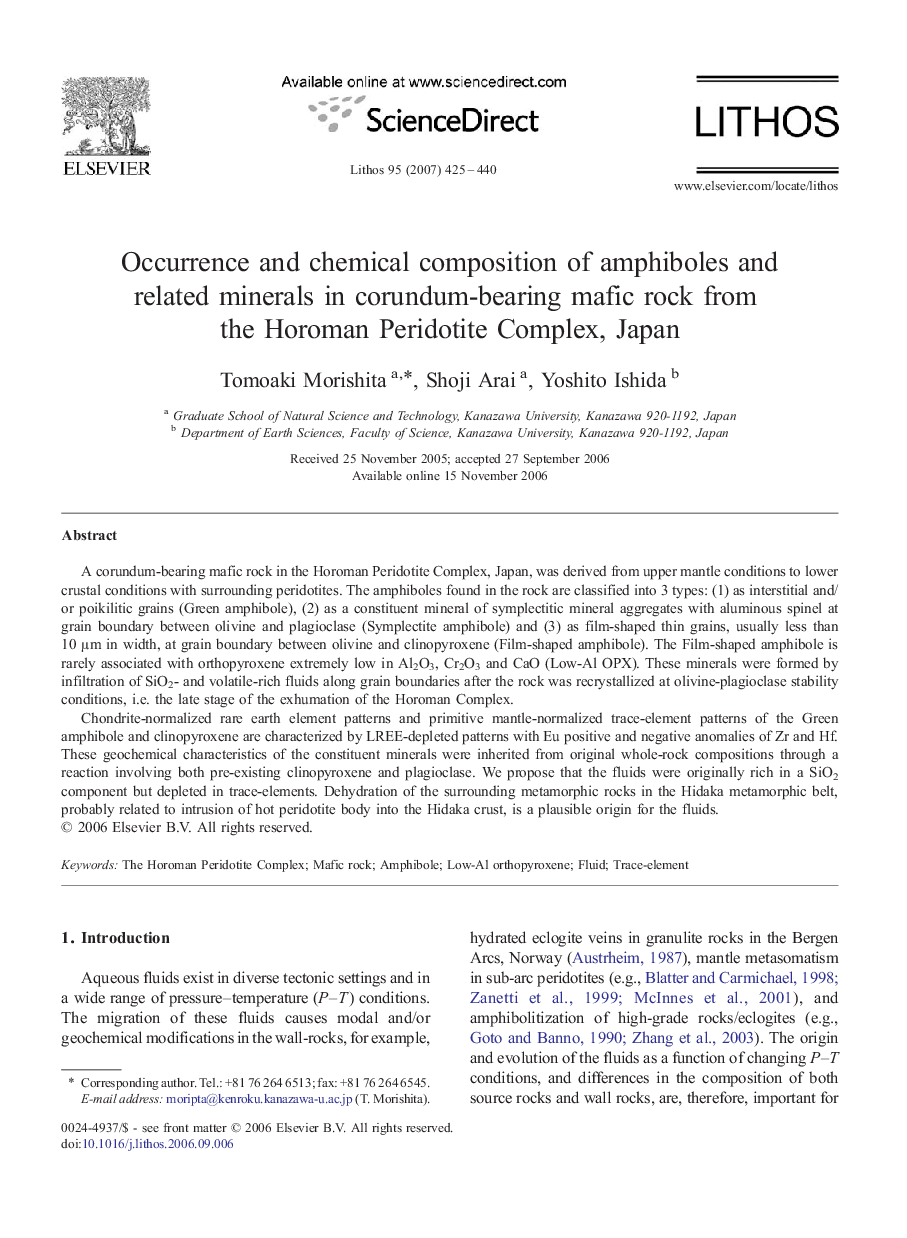| Article ID | Journal | Published Year | Pages | File Type |
|---|---|---|---|---|
| 4717873 | Lithos | 2007 | 16 Pages |
A corundum-bearing mafic rock in the Horoman Peridotite Complex, Japan, was derived from upper mantle conditions to lower crustal conditions with surrounding peridotites. The amphiboles found in the rock are classified into 3 types: (1) as interstitial and/or poikilitic grains (Green amphibole), (2) as a constituent mineral of symplectitic mineral aggregates with aluminous spinel at grain boundary between olivine and plagioclase (Symplectite amphibole) and (3) as film-shaped thin grains, usually less than 10 μm in width, at grain boundary between olivine and clinopyroxene (Film-shaped amphibole). The Film-shaped amphibole is rarely associated with orthopyroxene extremely low in Al2O3, Cr2O3 and CaO (Low-Al OPX). These minerals were formed by infiltration of SiO2- and volatile-rich fluids along grain boundaries after the rock was recrystallized at olivine-plagioclase stability conditions, i.e. the late stage of the exhumation of the Horoman Complex.Chondrite-normalized rare earth element patterns and primitive mantle-normalized trace-element patterns of the Green amphibole and clinopyroxene are characterized by LREE-depleted patterns with Eu positive and negative anomalies of Zr and Hf. These geochemical characteristics of the constituent minerals were inherited from original whole-rock compositions through a reaction involving both pre-existing clinopyroxene and plagioclase. We propose that the fluids were originally rich in a SiO2 component but depleted in trace-elements. Dehydration of the surrounding metamorphic rocks in the Hidaka metamorphic belt, probably related to intrusion of hot peridotite body into the Hidaka crust, is a plausible origin for the fluids.
